Seriously, is there anything better than chocolate? It satisfies your sweet cravings, it’s been touted as having super healthy benefits, and it makes you feel happy.
Even though I’m a die-hard supporter of fruits and veggies, they sure have a lot to compete with when it comes to chocolate.
And I know I’m not the only one who feels this way; according to one estimate, Americans will eat “$18.27 billion worth” of chocolate by the end of 2015.
While we’re lucky enough to have our pick of chocolate out there, chocolate was once considered “a highly-prized luxury item among Mayan and Aztec upper class elites”. Aztec rulers considered cacao beans as valuable as gold. They even used cacao beans to pay taxes!
If only that were the case now, right?
So how did this one bean become such a prized commodity all over the world?
Well, because of what it does to us and how it makes us feel. Today we’ll analyze exactly why we’re so in love with chocolate and discuss what it’s really doing to our bodies when we eat it.
What’s Exactly In Chocolate?
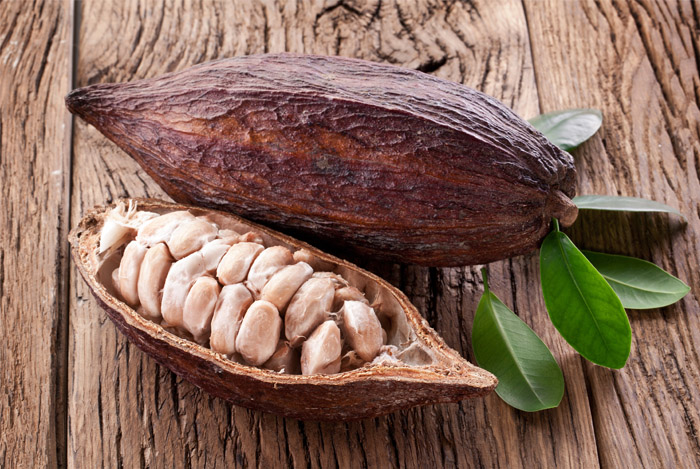 When I was a kid, I tore open every candy bar looking for a golden ticket to a magical chocolate factory. As you can assume, I never found one (yet!).
When I was a kid, I tore open every candy bar looking for a golden ticket to a magical chocolate factory. As you can assume, I never found one (yet!).
This fascination with chocolate making led me to research what exactly goes into making one of those tasty, sweet treats we all know and love. I mean, doesn’t chocolate come from a bean? How on earth does chocolate taste so much better than kidney beans?
The secret: sugar and fat.
See, cacao trees produce intensely bitter seeds. In order to improve this, cacao seeds have to be fermented to develop their flavor. The fermented seeds are known as cacao beans, which are then dried, cleaned, and roasted.
The outer shell of the beans is removed to reveal cacao nibs. Ground cacao nibs become pure chocolate in the form of cocoa mass, which becomes liquified and is known as chocolate liquor.
Chocolate liquor is then processed to become cocoa solids and cocoa butter to make the three types of chocolate we know today.
Dark Chocolate
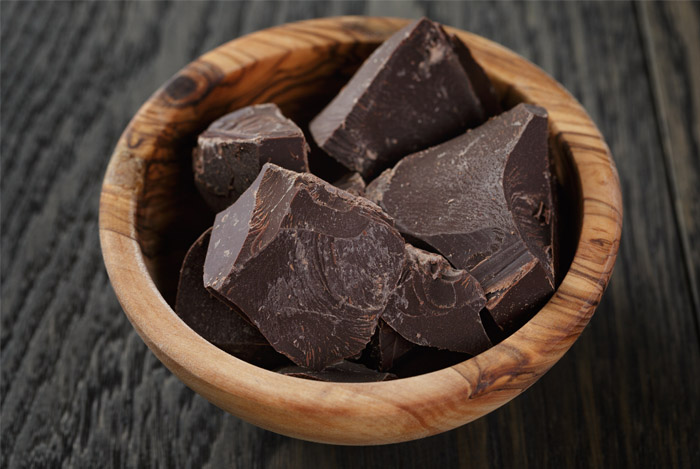 Dark, bitter, unsweetened, or semisweet chocolate is mostly cocoa solids with a bit of cocoa butter and sugar.
Dark, bitter, unsweetened, or semisweet chocolate is mostly cocoa solids with a bit of cocoa butter and sugar.
It needs to contain at least 35% chocolate liquor, more than 60% cocoa solids, and under 27% fat content. You’ll also notice little to no added sugars – a major score for you healthy readers with a sweet tooth (me included!).
Dark chocolate is considered the healthiest chocolate because it has “two to four times (or more) the amount of flavonoids than milk chocolate”.
Milk Chocolate
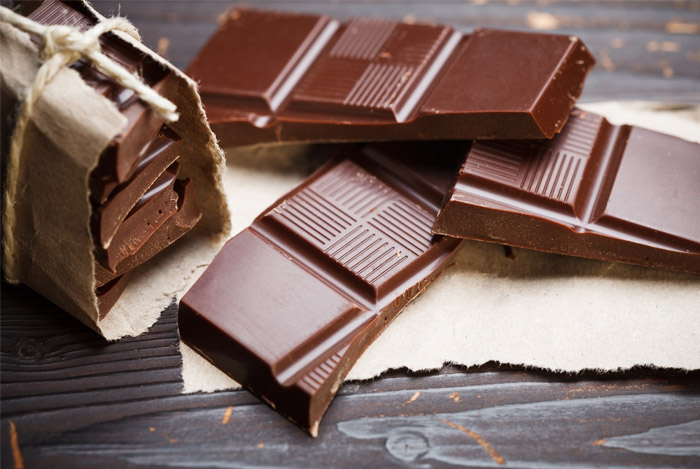 Milk chocolate is the most commercially available type of chocolate. It contains more sugar than dark chocolate and the addition of milk powder or condensed milk to provide a creamier, mild flavor.
Milk chocolate is the most commercially available type of chocolate. It contains more sugar than dark chocolate and the addition of milk powder or condensed milk to provide a creamier, mild flavor.
Milk chocolate in the U.S. must have at least 10% cocoa mass and 12% whole milk. I never knew milk chocolate needed more milk than cocoa. Does that surprise you, too?
Keep in mind that since milk “binds to antioxidants in chocolate” it makes them unavailable for our body to use. Sorry to break the bad news, but milk chocolate is not a good source of the antioxidants dark chocolate is so valued for.
What a bummer.
White Chocolate
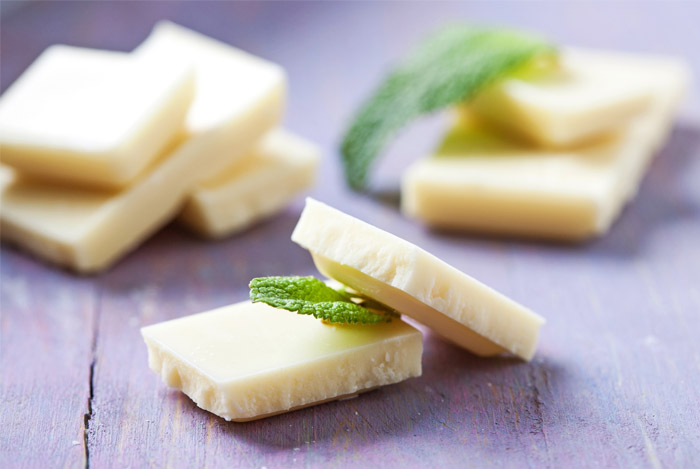 Contrary to its name, white chocolate doesn’t contain any cocoa solids and is actually just cocoa butter, sugar, and milk.
Contrary to its name, white chocolate doesn’t contain any cocoa solids and is actually just cocoa butter, sugar, and milk.
Because it lacks the healthy part of chocolate, the cocoa solids and chocolate liquor, white chocolate doesn’t have any of the same health benefits dark chocolate provides.
Dark chocolate comes out as the clear winner because it contains the least amount of fat and sugar and contains flavonoids. White chocolate, though very sweet, should be on your list of occasional food items to eat since it doesn’t offer much in the way of nutritional benefits.
So Dark Chocolate is Healthy?
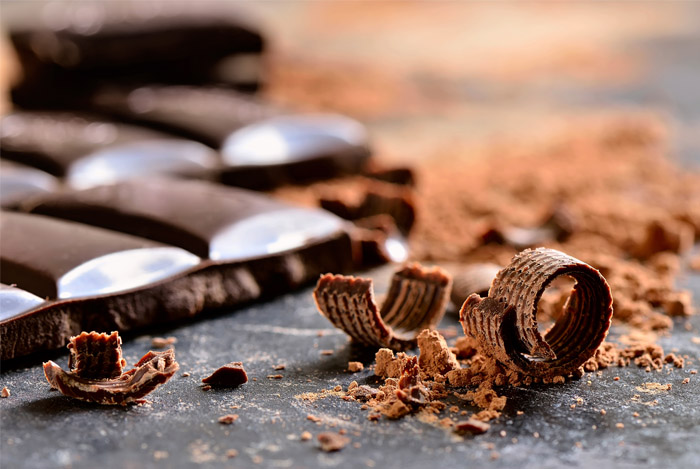 According to research, dark chocolate is rich in antioxidants that reduce inflammation and protect your body from oxidative damage.
According to research, dark chocolate is rich in antioxidants that reduce inflammation and protect your body from oxidative damage.
One study discovered that dark chocolate containing 70% cocoa also helps increase HDL, or ‘good’ cholesterol, and even reduced waist circumference in women.
That’s not even the tip of the dark chocolate iceberg when it comes to healthy benefits.
Dark chocolate has been associated with:
- Decreased stroke risks
- Preventing blood clots
- Increased brain activity
- Preventing cancer
- Improved skin appearance
- Lower blood pressure
- Reduced risk for diabetes
- Increased satiety
The problem is that most chocolate in the candy aisle isn’t the healthy dark chocolate kind. It’s a mix of milk chocolate, sugar, and even trans fat (gasp!).
What’s in Your Chocolate Bar
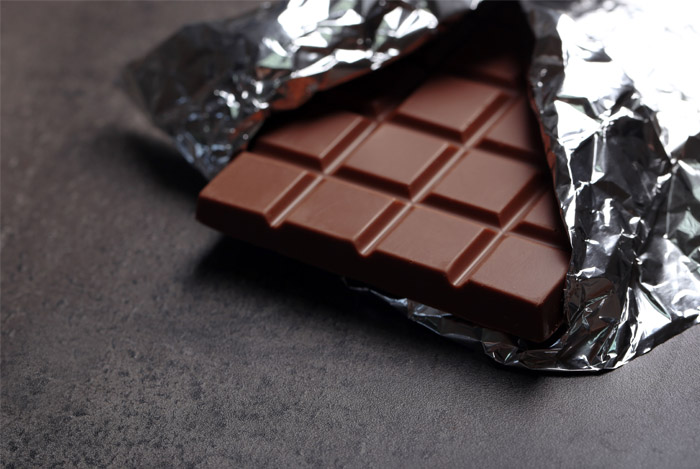 When was the last time you checked the nutrition labels on your favorite indulgences? Are you too scared to give them more than a cursory glance?
When was the last time you checked the nutrition labels on your favorite indulgences? Are you too scared to give them more than a cursory glance?
Here, let me give your brain a refresher:
- Oh Henry!: 263 calories, 26 g of sugar, 13 g of fat
- Three Musketeers: 257 calories, 40 g of sugar, 7.6 g fat
- Baby Ruth: 275 calories, 32 g of sugar, 13 g of fat
- Twix: 286 calories, 27 g of sugar, 14 g of fat
- Butterfinger: 275 calories, 27 g of sugar, 11 g of fat
- Reese’s Peanut Butter Cups: 232 calories, 21 g of sugar, 13 g of fat
As you can see, commercial candy bars are loaded with an excessive amount of calories, sugar, and fat.
Fats can account for as much as 50% of the total calories in a chocolate bar. Although that seems like a lot of fat (because it is), you should pay more attention to the type of fat being used to make your chocolate.
For instance, cocoa butter contains oleic acid, which is a heart-healthy monounsaturated fat that may help reduce cholesterol.
However, chocolate bars with palm, hydrogenated, or partially hydrogenated oils will raise bad cholesterol levels. These are some of the worst oils for your health.
As if that wasn’t bad enough, expect to find these other harmful ingredients in chocolate:
- High fructose corn syrup (HFCS)
- Partially hydrogenated oils (trans fats)
- Artificial colorings
- Artificial flavorings and preservatives
So using the nutrition facts I just outlined, let’s see what happens when your body digests chocolate.
After the First 10 Minutes
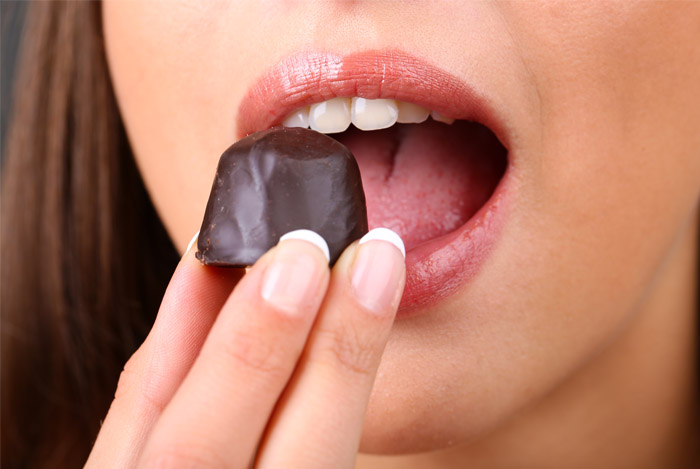 You’re probably used to gobbling an entire chocolate bar in less than 10 minutes, and while that’s not something to brag about, it isn’t entirely your fault either.
You’re probably used to gobbling an entire chocolate bar in less than 10 minutes, and while that’s not something to brag about, it isn’t entirely your fault either.
See, when your brain gets a taste of junk food, it doesn’t know any better and immediately starts rewarding you for choosing the chocolate bar instead of healthy foods that actually taste better than junk food.
Chocolate is considered a junk food because it contains lots of calories and way too much sugar and fat with zero nutritional upsides (think: good carbs, protein, fiber).
Food definitely affects our emotions. When you eat chocolate, your brain starts to release those “feel good” chemicals such as dopamine, which actually make you feel happy while you’re eating.
Sex therapist Dr. Ruth Westheimer says: “The taste of chocolate is a sensual pleasure in itself, existing in the same world as sex”.
There’s science behind giving your loved ones chocolate. When we eat chocolate, our brains release endorphins, which are the same hormones released when we’re happily in love.
According to one study, “when a small piece of chocolate brownie was placed in participants’ mouths…The increase of dopamine was as great as that seen when participants had received the stimulant drug methylphenidate or Ritalin”.
Chocolate also contains tryptophan, that essential amino acid responsible for us feeling calm, relaxed, and ready for a good night’s sleep. But tryptophan also aids the brain in producing serotonin, a mood-regulating neurotransmitter known as the “happy chemical”.
Sure, chocolate makes us happy, but don’t get too excited yet. This is also what makes drugs so addictive; drugs light up the areas of our brains that are responsible for a rush of “feel good” chemicals that make users feel amazing for a short period of time.
The brain gets so happy it starts to crave more of whatever was responsible for the sudden rush of pleasure (be it cocaine or chocolate). This is how drug and food addictions work – reward, withdrawal, craving, repeat.
So the first 10 minutes are full of pleasure and the craving for more chocolate than you probably wanted to eat – kind of bittersweet, right?
According to one study, chocolate will make us feel joyful as long as we don’t eat too much.
Researchers gave 37 healthy women of normal weight three options: eat a chocolate bar, an apple, or nothing. Then they were asked to rate their moods and feelings in intervals of 5, 30, 60, and 90 minute intervals.
The women eating the chocolate and the apple reported reduced hunger levels and elevated moods. But scientists noted that the “effects of the chocolate were stronger”.
However, even though women reported feelings of joy after eating the chocolate, some of them also felt intense feelings of guilt, which negatively affected their positive feelings.
I would also feel guilty if I was forced to eat a whole bar of chocolate in one sitting. Of course it would be delicious, but one 1 oz. square of chocolate is all you need to eat to enjoy its amazing health benefits without the guilt.
After 20 Minutes
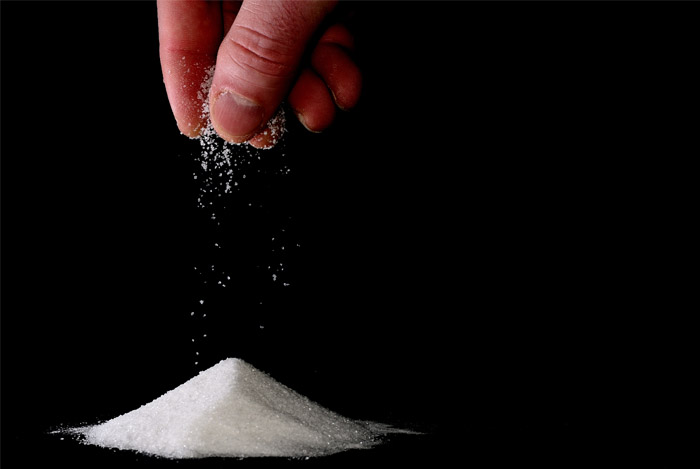 Your blood sugar will begin to rise around 20 minutes after you eat something sugary.
Your blood sugar will begin to rise around 20 minutes after you eat something sugary.
The FDA doesn’t have a recommended daily intake of sugar because it’s not considered an essential nutrient.
While it would be ideal to consume most of your sugar from naturally occurring sources such as fruit, you should also understand how much sugar you’re consuming via added sugars in your diet, especially the sugar in chocolate bars.
The American Heart Association says men shouldn’t exceed more than 9 teaspoons of sugar (37.5 g) per day; women should aim for less than 6 teaspoons (25 g of sugar).
Remember those nutrition facts about chocolate bars I gave you earlier?
Almost all of them contain over 100% of your recommended daily intake of sugar, or very close to it.
You read that right; one chocolate bar may be more sugar than you should have in an entire day!
So when those 10 g+ of sugar hit your bloodstream, your blood sugar levels spike and you get a burst of insulin. Your liver tries to cope with all the sugar floating around in your blood so it starts turning that sugar into fat deposits to store and process later.
If you’re making chocolate bars a daily menu item, you may be setting your body up for insulin resistance.
“Insulin resistance is a condition in which the body produces insulin but does not use it effectively. When people have insulin resistance, glucose builds up in the blood instead of being absorbed by the cells, leading to type 2 diabetes or prediabetes”.
Keep in mind that almost all of the sugar in chocolate comes from high-fructose corn syrup, a substance known to be highly addictive and harmful.
After 40 Minutes
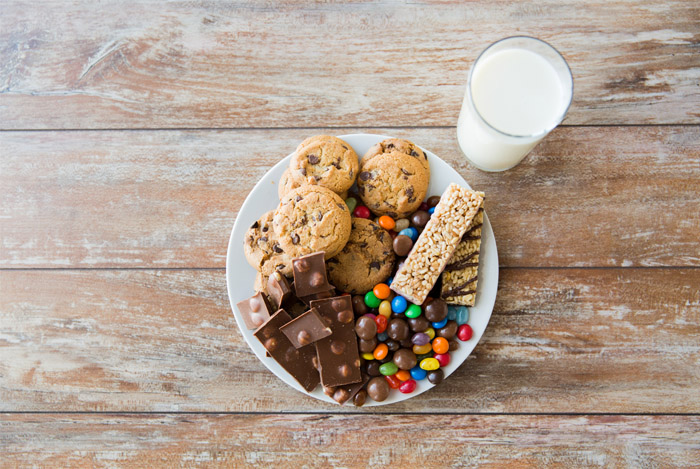 If you’re feeling a little energized after that chocolate bar, you can thank sugar for the rush, but don’t forget about caffeine.
If you’re feeling a little energized after that chocolate bar, you can thank sugar for the rush, but don’t forget about caffeine.
Caffeine is naturally present in cocoa beans, so just a little bit of chocolate contains some of the stimulant. And after 40 minutes the caffeine is completely absorbed by your body and kicking in.
“Candy bars generally have less than 10 milligrams, but the darker the chocolate, the higher the caffeine content”.
In fact, a bar of Hershey’s Special Dark Chocolate has 31 milligrams of caffeine, which is almost as much as a can of Coke contains!
But will you use that caffeine to run a half marathon?
Doubtful. Consuming all that sugar and all those calories will leave you with one craving: more junk food.
You may start to actually feel hungrier after 40 minutes of eating chocolate and you won’t be looking for a healthy meal, you’ll be looking for high calorie, high sugar foods to appease your brain’s withdrawals.
Why?
Because your blood sugar levels are way out of whack; the HFCS is quickly absorbed, your insulin levels spiked, and now the hunger pangs are kicking in.
Once you understand the science behind these food cravings and learn what they mean, you’ll be able to fight them off and avoid unintentional overeating.
After 60 Minutes
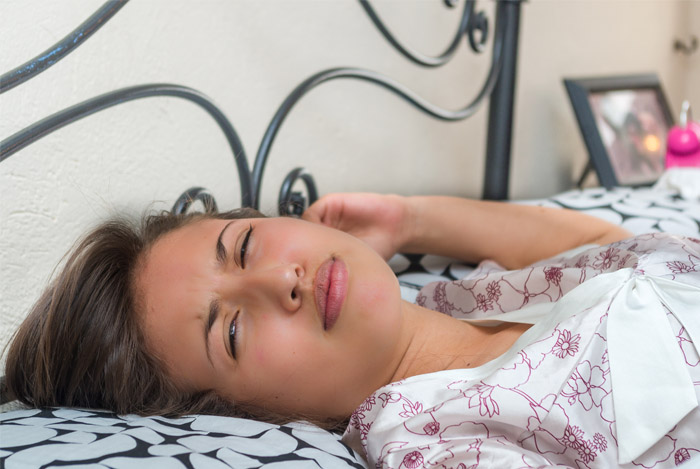 Depending on how sensitive your body is to caffeine (and what type of chocolate you’re enjoying), you may be feeling the diuretic properties coming on strong one hour after eating that chocolate bar. So make sure to be near a bathroom.
Depending on how sensitive your body is to caffeine (and what type of chocolate you’re enjoying), you may be feeling the diuretic properties coming on strong one hour after eating that chocolate bar. So make sure to be near a bathroom.
But you may be looking for the nearest sofa or bed instead.
That’s because after an hour, if you haven’t stuffed more sugar or chocolate in your face, your sugar crash starts and you may feel sluggish, cranky, and even plagued with headaches.
Typically, your body only needs 24–72 hours to digest food, but trans fats take approximately 51 days to digest! That alone should be reason enough to watch what’s in your chocolate.
How to Eat Chocolate for Your Health
 Even though this timeline paints a less than stellar portrait of chocolate, choosing the right kind of chocolate and eating it in moderation ensures you’ll get the best of both worlds.
Even though this timeline paints a less than stellar portrait of chocolate, choosing the right kind of chocolate and eating it in moderation ensures you’ll get the best of both worlds.
Stick to dark chocolate that’s at least 70% cocoa. This will give you a healthy dose of flavonoids, which are part of the polyphenols group of antioxidants. It’s one of eight reasons dark chocolate is so amazing for you.
Make sure to limit your chocolate cravings to just one 1 oz. dark chocolate square each day, and eat no more than seven each week. Try to eat your dark chocolate after a meal or with some fruit to avoid overeating.
Always opt for chocolate made without hydrogenated or partially hydrogenated oils, choose dark chocolate with healthy fats and you’ll be golden.
Are you surprised by how unhealthy most chocolate is? Chocoholics, are you going to be solely devoted to dark chocolate like I am? Let me know all your chocolate related thoughts in the comments!
The post This is What Happens to Your Body 1 Hour After Eating Chocolate appeared first on Nutrition Secrets.
http://www.nutritionsecrets.com/what-happens-when-you-eat-chocolate/
No comments:
Post a Comment